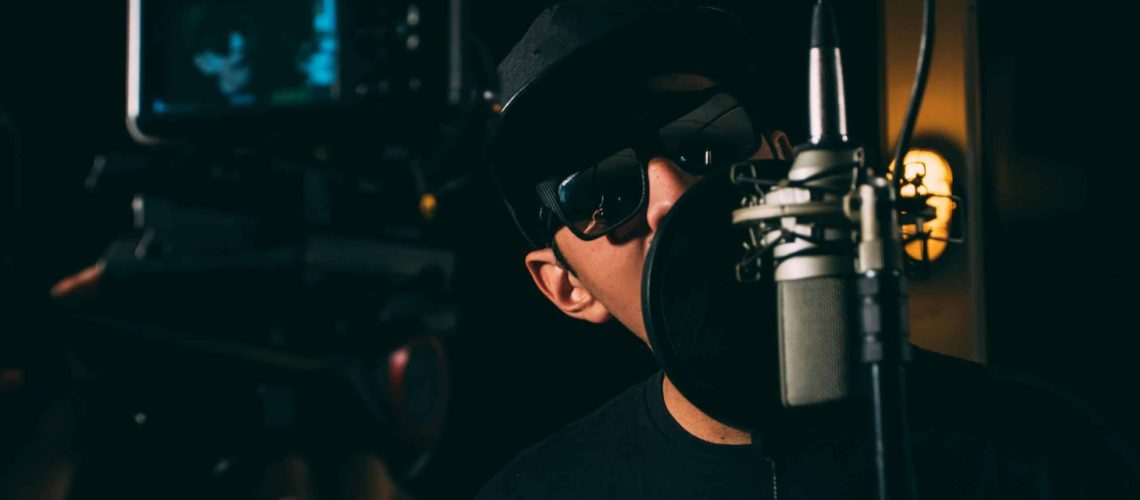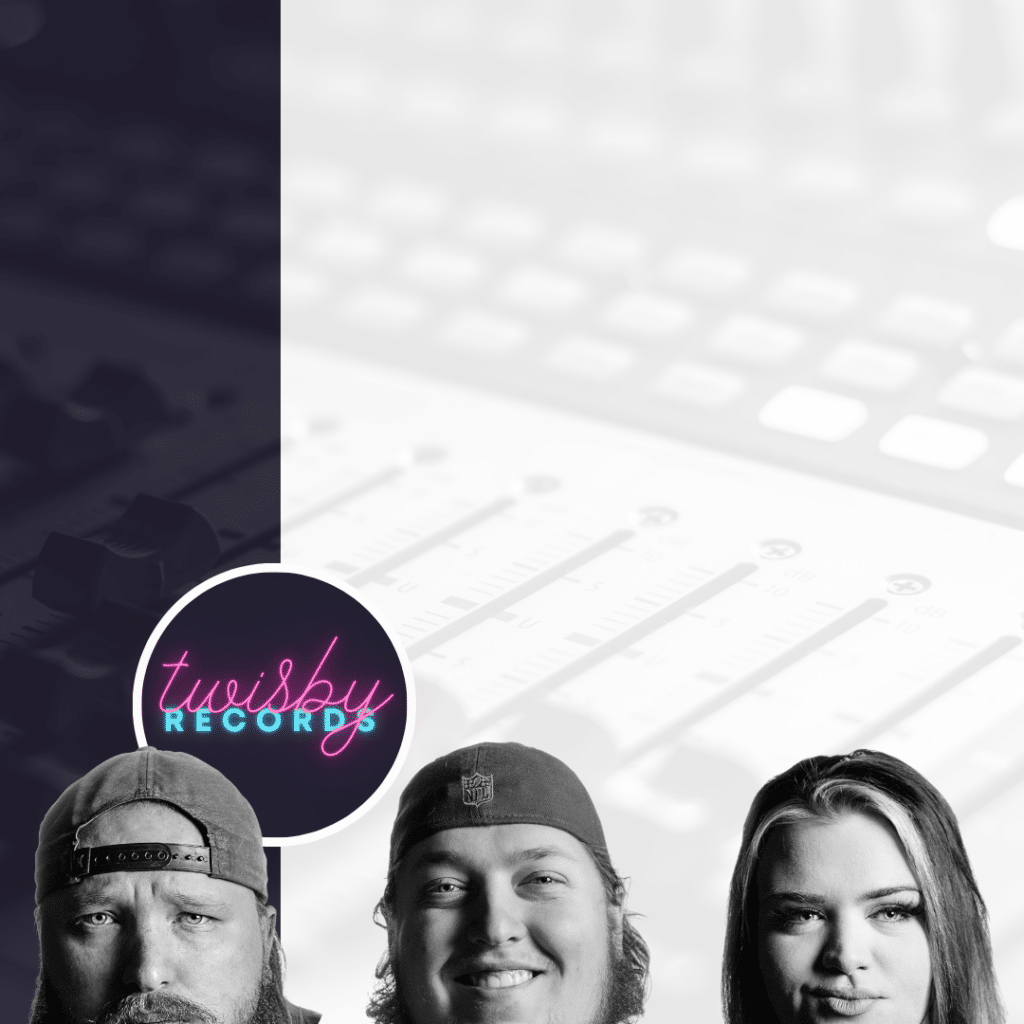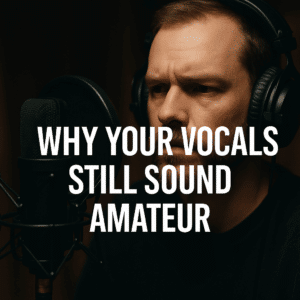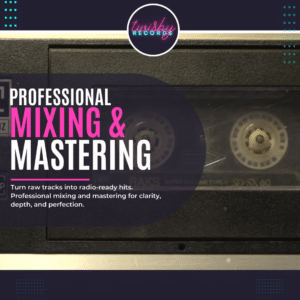I’ve lost count of how many sessions ended the same way.
The singer takes off their headphones, looks at me, and says, “It just doesn’t feel the same as my demo.”
They’re right. It doesn’t. The demo had something raw hiding between the lines a few broken words, a laugh that slipped out, maybe a note that cracked in the perfect spot.
That’s the stuff that makes you believe it.
That’s the stuff the studio version usually kills.
And almost every time, the missing piece is the adlibs.
Most people think adlibs are background noise. “Throw in some yeahs, some oohs, it’ll sound full.”
No. Adlibs aren’t decoration.
They’re the part that makes the listener lean in and believe you mean what you’re saying.
Table of Contents
The Take That Dies on the Couch
There’s a look artists get when they realize the mix is clean but lifeless.
The pitch is right, the doubles are tight, everything’s glued together and yet, nobody’s moved by it.
That’s the take that dies on the couch.
It’s what happens when you chase perfection instead of emotion.
When you try to sing well instead of say something.
The truth is, the moment you stop reacting, you stop being believable.
Adlibs live in that space between thought and instinct.
It’s the part of the performance where you stop acting like a singer and start sounding like a person.
What Adlibs Really Are
“Adlib” comes from ad libitum, Latin for “at one’s pleasure.”
But, Forget the Latin. In real life, adlibs are what spill out when you forget the rules for a second.
It’s that muttered line under your breath when a lyric hits too close.
It’s the laugh you didn’t mean to keep.
It’s the sound that slips out when the emotion’s still too heavy to let go of.
That’s an adlib.
It might be a little melodic riff, a short harmony, a repeat of a phrase that hit harder than you expected.
In hip hop, it’s often a signature Travis Scott’s “it’s lit,” Migos’ “skrrt,” Offset’s “woo.”
In pop or rock, it’s the line tucked behind the main hook that carries more emotion than the lyric itself.
Country singers do it too those soft “mmm”s and “yeahs” between lines aren’t just filler. They’re breathing room.
You don’t always notice them, but you’d feel their absence.
They’re the proof that a real person was in that vocal booth, not just a voice chasing a metronome.
The Session Where It Finally Clicked
I remember a session a few years back an artist who’d been working on the same song for months.
The verses were honest, the hook was strong, but she couldn’t stop rewriting.
Every time she came in, the performance got tighter and colder.
At one point I told her, “Stop rewriting and start reacting.”
I looped the chorus and told her to just talk over it.
She started mumbling. Then she started laughing. Then she sang a half-line that wasn’t even a lyric.
And just like that, the song woke up.
That mumble turned into a harmony line that carried the whole end section.
That half-line became the emotional hook everyone quoted later.
That’s what adlibs do.
They break the wall between “artist performing” and “person feeling.”
Why It Actually Matters
Every artist worries about sounding fake.
You can’t edit that fear out of a take.
You can have a perfect vocal chain, the right mic, a perfectly treated room and the song still feels like it’s missing its heartbeat.
The reason is simple: you can’t EQ emotion.
You either captured it, or you didn’t.
Adlibs are how you trick yourself into capturing it again.
They give you permission to stop performing and start reacting.
And when you do that, the listener hears it.
They might not know what changed, but they’ll tell you, “This one feels different.”
That’s not compression. That’s honesty.
How to Track Adlibs That Don’t Sound Forced
Adlibs can ruin a song just as easily as they can save it.
If you just throw noise at a track, it’ll sound like you’re trying to fill space instead of meaning it.
Here’s how to actually record adlibs that add something real.
1. Stop planning them.
Hit record, loop the section, and just respond. Don’t script. Don’t think. The best ones happen when you’re not trying.
2. Keep the track moving.
If you freeze up, start talking. Anything. Even nonsense. The moment you stop chasing “perfect,” your instincts come back online.
3. Don’t fill every hole.
Leave air. Leave tension. A breath at the right moment says more than another lyric ever could.
4. React emotionally, not musically.
If the lyric hurts, let your voice break. If it’s cocky, laugh. If it’s sad, sigh. Don’t act respond.
5. Treat them like a second character.
Your lead vocal is the main conversation. The adlibs are the reply. Sometimes they agree, sometimes they argue. That’s what gives a song movement.
6. Comp them like a story, not a collage.
When you’re editing, don’t just stack your favorite sounds. Keep the ones that feel like they belong to the same person having a moment.
Why AI and “Perfect Vocals” Can’t Touch This
The internet’s full of plug-ins and tutorials that promise perfect vocals.
You can clean up noise, correct timing, smooth tone but you can’t automate emotion.
AI can mimic tone, but it can’t fake a reaction.
That’s why adlibs matter more now than ever.
It’s the one part of a performance that’s still impossible to replicate.
No model knows what your voice does when you catch yourself feeling something.
That’s why producers chase those moments like gold.
The artists who win now aren’t the ones with the cleanest takes they’re the ones who sound like real people.
How I Coach It in the Booth
When I’m running a vocal session, adlibs are the last thing we do, not because they’re an afterthought, but because they’re where the truth hides.
By that point, the artist’s tired. Their guard’s down. That’s when the real takes happen.
I’ll tell them, “Forget the lyric. React to it.”
If the song’s about someone they lost, I’ll ask who they were thinking of when they wrote it.
If it’s a love song, I’ll make them sing it to that person’s name.
And then I’ll keep rolling.
Nine times out of ten, the adlibs from that take make the final mix.
They cut through better than anything we tracked earlier because they’re not performed they’re felt.
That’s what you want in your music. Not polish. Not perfection. Just truth.
What You Should Do Right Now
Open your last session.
Solo your lead vocal and ask yourself:
Does this sound like me, or does it sound like someone trying to sound like me?
If it feels stiff, the first fix isn’t a new mic or another plug-in.
It’s adding emotion back in with adlibs.
Record a few takes where you just respond to yourself.
Don’t worry about what it sounds like.
You’ll find the ones that hit you in the gut, the ones that make you remember why you wrote the song in the first place.
That’s the version that deserves to be finished.
That’s the version people will believe.
And if you can’t get there alone, that’s fine.
That’s why I started doing remote vocal production, so you don’t have to try to wear the artist hat and the producer hat at the same time.
You focus on the story. I’ll steer the performance until it feels right.
FAQ
Do you plan adlibs before recording?
Never. The second you plan them, they stop being adlibs. You can mark spots to try something, maybe a breath here, a call-and-response there, but you can’t script emotion. If you already know what you’re going to say, it’s performance, not reaction. The best adlibs are accidents you decide to keep.
How many adlib tracks should a song have?
Enough to make it feel alive, not crowded. I’ve mixed songs with one single background reaction that changed everything, and others with six layers fighting for space. The rule is simple: if you mute an adlib and the song still feels the same, it didn’t need to be there.
Should I record adlibs in the same mic chain as the lead?
Usually yes, consistency keeps it believable. But if the adlib is meant to sound like it’s coming from another world, I’ll grab a different mic or preamp. Change the color, move the artist a few feet back, flip to omni, even record through a guitar amp. The contrast can help the listener feel distance or intimacy depending on what you want emotionally.
How do I mix adlibs so they don’t overpower the lead?
Treat them like ghosts, not guests. They should haunt the lead, not compete with it. Roll off the lows, tuck them just under the main line, and automate the ones that need to peek through for emotion. And don’t compress them flat let the volume breathe so they move naturally with the song.
What if my adlibs sound awkward or fake?
That’s almost always mindset, not technique. You’re thinking instead of feeling. Step away from the mic, reset, come back, and sing like nobody’s going to hear this version. Talk through the lyric. Laugh. Swear. Yell. Then listen back and keep the moments that feel like truth, even if they’re messy.
Can adlibs fix a weak performance?
No they can highlight one. If the main take isn’t believable, adlibs just draw attention to that. They’re the icing, not the cake. Get the emotion right in the lead first. Then use adlibs to amplify what’s already real.
Why do producers care so much about adlibs now?
Because streaming killed attention spans. The first thirty seconds have to feel human or people skip. Adlibs are the quickest way to remind listeners there’s a real person behind the sound. It’s the only thing AI can’t fake yet that unpredictable spark when someone means it.
Can AI generate good adlibs?
It can mimic sound, not soul. It might match pitch and rhythm, but it won’t react to what a lyric means. AI can copy tone, but it can’t get goosebumps. That’s why real adlibs still matter, they prove there’s a person inside the song.
If your track sounds clean but cold, don’t throw another plug-in at it.
Hit record.
Say something you didn’t plan to say.
That’s where the magic hides.
And if you want someone to steer that process while you stay in the story, that’s literally what I do every day.
















